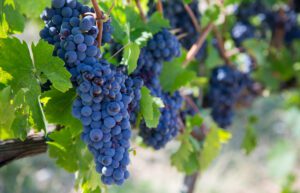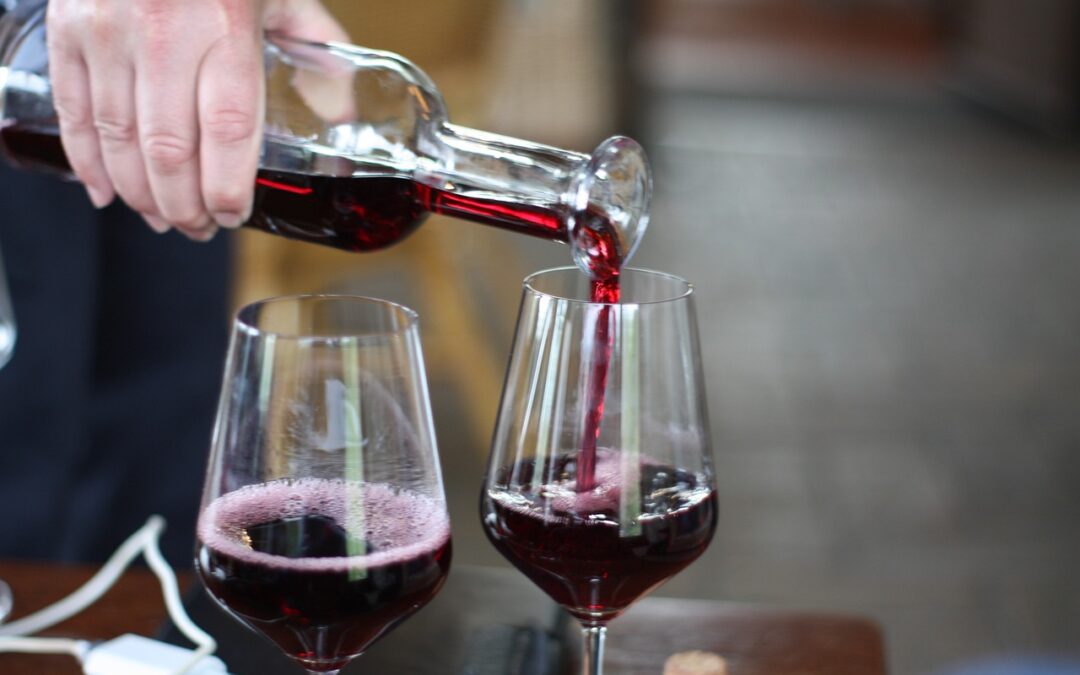By Bob Lipinski
It was over 30 years ago that the Dean of Italian Wine Writers, Burton Anderson, when writing about world-class grape varieties, decreed that France has Cabernet Sauvignon, Chardonnay, and Pinot Noir, and Germany has Riesling, but Italy, has three that the others do not: Aglianico, Nebbiolo, and Sangiovese. Let’s take a look at them.
Aglianico: A thick-skinned, high acid red grape variety, which according to legend was brought to Italy by ancient Greek settlers around 800 B.C. However, there is no evidence to support that hypothesis. The name Aglianico was first used in a letter dated 1559 from Sante Lancerio, cellarmaster to Pope Paul III, to Cardinal Guido Ascanio Sforza (Pope’s grandson). Lancerio wrote, “Aglianico wine comes from the Kingdom of Naples, where they make a good Greco.” The Aglianico grape is grown principally in southern Italy; Apulia, Calabria, and Molise, but flourishes in Basilicata and Campania. Aglianico is used in more than a dozen DOC wines and three DOCG wines, Aglianico del Taburno, Aglianico del Vulture, and Taurasi. Aglianico is also known as Aglianichello, Gnanico, and over 35 other synonyms.

Aglianico Grapes
Sensory characteristics of Aglianico include: Intense ruby-red color, distinctive complex fragrance, and flavor of berries (blackberry, cranberry, raspberry), black currants, cherries, red licorice, and plums, with nuances of bitter chocolate, black pepper, leather, truffles, violets, and earth.
Nebbiolo: A thin-skinned, high acid red grape variety grown principally in Piedmont. Nebbiolo produces wines that are usually rough and tannic when young but with age evolve into wines of extraordinary power, depth, and complexity. When blended with other varieties, the Nebbiolo grape gives the wine body, structure, and substance. The Nebbiolo grape, like Pinot Noir, doesn’t provide a lot of color to the wine, which accounts for the sometimes orange or brick color.
Nebbiolo is not one grape, but a family of grapes whose variations probably arrived through mutation. There are two subvarieties: Michet, which is the most prized, and Lampia, which is widely grown throughout the area. Nebbiolo is used to produce Barolo, Barbaresco, Gattinara, Ghemme, Roero, and many other wines.
Originally called Vitis vinifera Pedemontana (the grapevine of Piedmont), the grape is referred to as Nubiola, Nebiola, Nibiol, and Nebiolium in documents dating back to 1266. Other documents suggest that Nebbiolo was called allobrogica by Pliny the Elder (A.D. 23-79) in his Naturalis Historia. Its present name and spelling, officially sanctioned in 1962, are derived from the word nebbia (fog). Some say that it was given this name because of the persistent fog found in the area of cultivation, while others believe it alludes to the thick bloom that forms on the grape skins, making them look as if they were surrounded by small patches of fog. Nebbiolo is also grown in many countries of the world, especially Argentina. Nebbiolo is also known as Chiavennasca, Picotener, Spanna, and several other synonyms.

Nebbiolo Grapes
Sensory characteristics of Nebbiolo include: Ruby-garnet color that mellows into orange. An intense bouquet and flavor of berries (blackberry, cranberry, mulberry), cherry, jam, and dried fruit, along with almonds, black pepper, black tea, cedar, cinnamon, coffee, licorice, mint, mushrooms, nutmeg, plum, spices, and an earthy bouquet of forest leaves, truffles, and violets.
Sangiovese: A thin-skinned, high acid red grape variety grown in most of the 20 regions. It is grown principally in Tuscany where it produces Chianti, Brunello di Montalcino, Morellino di Scansano, Vino Nobile di Montepulciano, Carmignano, and many Super-Tuscan wines. Sangiovese is recommended or required as either a blending or a primary grape variety in over 150 DOC and DOCG wine appellations nationwide. Sangiovese is also grown in many parts of the world, including California and Washington State. DNA analysis (2004) determined that Sangiovese is a natural cross of Ciliegiolo and Calabrese di Montenuovo. The Sangiovese grape is one of Italy’s most noble varieties; originated in Tuscany, where it is widely grown. Its name is believed to come from Sanguis Jovis, Latin for Jupiter’s Blood.
For over 100 years, it was believed there were two basic subvarieties of Sangiovese… Sangiovese Grosso and Sangiovese Piccolo. This relied on grape and cluster size and suggested a difference in quality. However, from more recent evidence, such a simple distinction is no longer justified and therefore, not accepted. It is useful to consider “Sangiovese” as a highly adaptable grape and many clones have been identified. Sangiovese is also known as Brunello (Montalcino, Tuscany), Morellino (Scansano, Tuscany), Nielluccio (Corsica, France), Prugnolo Gentile (Montepulciano, Tuscany), San Gioveto, Sangiogheto, Sangiovese Grosso, Sangiovese Piccolo, and Sangioveto (Tuscany), and over 25 other synonyms.

Sangiovese Grapes
Sensory characteristics of Sangiovese include: Aromas and flavors of berries (blackberry, blueberry, cranberry, mulberry, raspberry, strawberry), black pepper, black tea, chestnut, jam, fennel, licorice, mint, mushroom, nuts (almond, hazelnut), plums, red currants, and sour cherry, with a bitter-almond aftertaste. Hints of balsam, cinnamon, lavender, leather, sage, and violets.
There are many world-class grape varieties … you just need to know where to look!
Bob Lipinski is the author of 10 books, including “101: Everything You Need To Know About Whiskey” and “Italian Wine & Cheese Made Simple” (available on Amazon.com). He consults and conducts training seminars on Wine, Spirits, and Food and is available for speaking engagements. He can be reached at www.boblipinski.com OR bkjm@hotmail.com


 Bob Lipinski, author of 10 books; writes, consults, and conducts training seminars on Wine, Spirits, and Food and is available for speaking engagements.
Bob Lipinski, author of 10 books; writes, consults, and conducts training seminars on Wine, Spirits, and Food and is available for speaking engagements.
Recent Comments